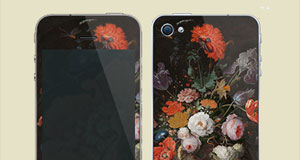Commissioned by the City of Amsterdam, 1650/51;{A list of works for which Quellinus was paid in four instalments between 6 January and 12 September 1651 includes a _Voorsichticheit_ (Prudence) for 60 guilders, referring to either this model or the model for the sculpture of the same subject in the Vierschaar, see Stadsarchief Amsterdam (hereafter: SAA), archive 5039 (Thesaurie Ordinaris), inv. no. 624, no. 5. Also see no. 11, where the model is again mentioned as _de voorsichtigh[eid] gebotcheert - 60_ [guilders] (prudence modelled - 60 [guilders]).} from the artist,{K. Fremantle, ‘The Fountains Designed for Van Campen’s Amsterdam Town Hall and Quellien’s Models for Them’, _Album discipulorum aangeboden aan J.G. van Gelder ter gelegenheid van zijn 60ste verjaardag_ (_Utrechtse Kunsthistorische Studiën_ 7), Utrecht 1963, pp. 101-18, esp. p. 104 (note 15): _dewijl zijn werk lootse nu affgebroken wordt dat haer Edele_ [burgemeesters] _sullen laten affhalen de modellen vande beelden die hij ten behoeve dezer Stede gemaeckt heeft_ (while his workshop is being closed, that her Noble [burgomasters] shall have the models of the sculptures that he made on behalf of this City collected). See also H.J. Wiggers, ‘De stad Amsterdam en haar vroegste beeldencollectie’, in M. Jonker et al., _In beeld gebracht: Beeldhouwkunst uit de collectie van het Amsterdams Historisch Museum_, coll. cat. Amsterdam 1995, pp. 60-75, esp. p. 62 (referring to A.W. Kroon, _Het Amsterdamsche stadhuis (thans Paleis), 1625-1700: Zijne geschiedenis naar onuitgegeven officiële bronnen bewerkt_, Amsterdam 1867, p. 138).} transferred to the Town Hall (now Royal Palace) at Dam Square, Amsterdam, 1664;{This _Prudentia_ and one of the two Atlas-models ([BK-AM-51-7](https://data.rijksmuseum.nl/200115913) or [-8](https://data.rijksmuseum.nl/200115914)) were stored separately from the other Quelliniana for a long time: they remained in the Thesaurie Ordinaris and were never transferred to the _kunstkamer_. In April 1806, the models were moved to the _rariteitenkamer_ (curiosity chamber), also called the Diplomatieke Bibliotheek (Diplomatic Library) and subsequently transferred to the _rariteitenkamer_ of the town hall in the Prinsenhof, after which they were given in long time loan with the other Quelliniana to the newly opened Rijksmuseum in 1887, see H.J. Wiggers, ‘De stad Amsterdam en haar vroegste beeldencollectie’, in M. Jonker et al., _In beeld gebracht: Beeldhouwkunst uit de collectie van het Amsterdams Historisch Museum_, coll. cat. Amsterdam 1995, pp. 60-75, esp. pp. 62 and 67-73.} transferred to the Town Hall at the Prinsenhof, Amsterdam, 1808;{H.J. Wiggers, ‘De stad Amsterdam en haar vroegste beeldencollectie’, in M. Jonker et al., _In beeld gebracht: Beeldhouwkunst uit de collectie van het Amsterdams Historisch Museum_, coll. cat. Amsterdam 1995, pp. 60-75, esp. p. 69, referring to a list compiled and signed by Arend Fokke Simonsz in 1808, with works which were transferred from the Thesaurie to the new _rariteitenkamer_ in the Prinsenhof. See SAA, archive H. 86.003 (Library), A. Fokke Simonsz, _Aanteekeningen betreffende de voornaamste Oudheden der stad Amsterdam_ [...], Amsterdam, 20 January 1808.} on loan to the museum, since 1887{See SAA, archive H. 86.002 (Library).}
Bibliografie en afkortingenlijst voor de herkomst (pdf)


